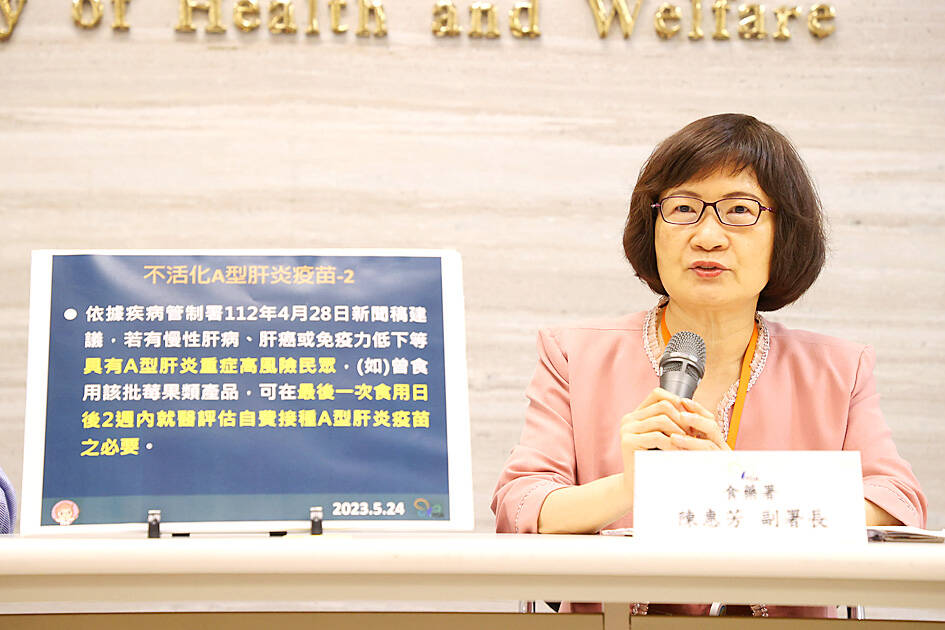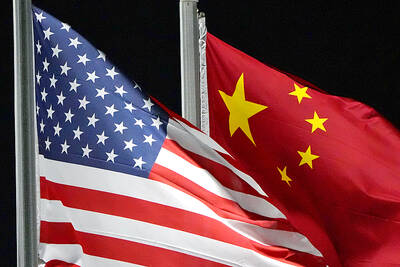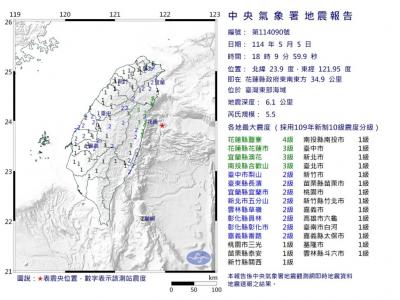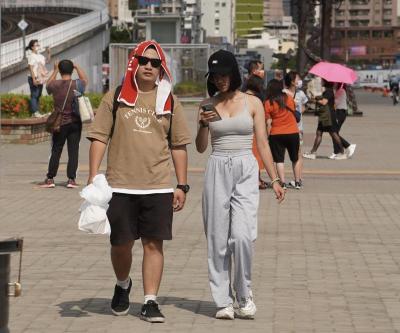While liquid bandage products are handy, some precautions should be taken, and people with a glucose-6-phosphate dehydrogenase (G6PD) deficiency should avoid them, as they contain an ingredient that might trigger hemolytic anemia in people with the condition, the Food and Drug Administration (FDA) said yesterday.
Liquid bandages create a waterproof clear shield over a wound, protecting it from germs and dirt to help prevent skin infection.
As they are classified as a medical device in Taiwan, manufacturers or importers of liquid bandages require a permit obtained from the Ministry of Health and Welfare, and only those with a medical device dealer’s permit can sell the products, FDA Deputy Director Cheng Hwei-fang (陳惠芳) said.

Photo: CNA
Liquid bandages are a sterile liquid, semi-liquid, or powder and liquid combination used to cover a skin wound, FDA Medical Device and Cosmetics Division section chief Lin Hsiu-te (林修德) said.
They mainly come in two forms — brush-on and spray — and have the advantage of covering areas that are difficult to cover with traditional plastic or fabric plasters, such as the knuckles or between the fingers, he said.
However, liquid bandages should not be used on larger wounds, scrapes, ulcers, festering wounds or burns, Lin said, adding that people should also avoid applying them near their eyes or nose, or on the mucosa or sensitive skin.
Moreover, as liquid bandages mostly contain pyroxyline, benzyl alcohol and camphor, people with a G6PD deficiency should avoid using them, he said.
Exposure to camphor might trigger acute hemolytic anemia — a blood disorder in which red blood cells are destroyed faster than they can be made — in people with a G6PD deficiency, he said.
People should follow the three safety steps for using medical devices: “recognizing” the products as a medical device, “checking” if the outer package of the product has an approval number from the health ministry and “reading” the instruction leaflet for proper use of the device, Chen said.

An essay competition jointly organized by a local writing society and a publisher affiliated with the Chinese Communist Party (CCP) might have contravened the Act Governing Relations Between the People of the Taiwan Area and the Mainland Area (臺灣地區與大陸地區人民關係條例), the Mainland Affairs Council (MAC) said on Thursday. “In this case, the partner organization is clearly an agency under the CCP’s Fujian Provincial Committee,” MAC Deputy Minister and spokesperson Liang Wen-chieh (梁文傑) said at a news briefing in Taipei. “It also involves bringing Taiwanese students to China with all-expenses-paid arrangements to attend award ceremonies and camps,” Liang said. Those two “characteristics” are typically sufficient

The brilliant blue waters, thick foliage and bucolic atmosphere on this seemingly idyllic archipelago deep in the Pacific Ocean belie the key role it now plays in a titanic geopolitical struggle. Palau is again on the front line as China, and the US and its allies prepare their forces in an intensifying contest for control over the Asia-Pacific region. The democratic nation of just 17,000 people hosts US-controlled airstrips and soon-to-be-completed radar installations that the US military describes as “critical” to monitoring vast swathes of water and airspace. It is also a key piece of the second island chain, a string of

A magnitude 5.9 earthquake that struck about 33km off the coast of Hualien City was the "main shock" in a series of quakes in the area, with aftershocks expected over the next three days, the Central Weather Administration (CWA) said yesterday. Prior to the magnitude 5.9 quake shaking most of Taiwan at 6:53pm yesterday, six other earthquakes stronger than a magnitude of 4, starting with a magnitude 5.5 quake at 6:09pm, occurred in the area. CWA Seismological Center Director Wu Chien-fu (吳健富) confirmed that the quakes were all part of the same series and that the magnitude 5.5 temblor was

The Central Weather Administration has issued a heat alert for southeastern Taiwan, warning of temperatures as high as 36°C today, while alerting some coastal areas of strong winds later in the day. Kaohsiung’s Neimen District (內門) and Pingtung County’s Neipu Township (內埔) are under an orange heat alert, which warns of temperatures as high as 36°C for three consecutive days, the CWA said, citing southwest winds. The heat would also extend to Tainan’s Nansi (楠西) and Yujing (玉井) districts, as well as Pingtung’s Gaoshu (高樹), Yanpu (鹽埔) and Majia (瑪家) townships, it said, forecasting highs of up to 36°C in those areas